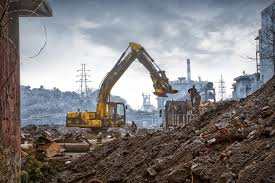How does urbanization contributes to habitat fragmentation, loss and the ecosystem?

In the past small groups of people have come together with the goal of settling in one area and to advance agriculture. Overtime some theme settlements become what we know as cities today. Urbanization is when cities expand and an increasing proportion of the population moves into them. When cities first started appearing people didn’t immediately move in, it took until the 18th century during large scale industrialization for cities to experience a large population growth. [2] Urbanization greatly affects the environment such as habitat loss, ecosystem fragmentation and increased human-wildlife conflicts. [1]

Urbanization leads to the conversion of natural habitats into urban areas, resulting in habitat loss for numerous species. This process involves deforestation, land clearing, and infrastructure development, all of which directly contribute to habitat destruction. One of the primary causes of habitat loss during urbanization is land conversion. Natural landscapes such as forests, wetlands, grasslands, and mangroves are often cleared to make way for residential areas, commercial zones, roads, and other urban infrastructure. This process directly removes the homes and resources that wildlife depend on for survival. For example, forests provide shelter, food, and breeding grounds for a diverse array of plants and animals. When these forests are cleared for urban development, species lose their habitat, leading to population declines and sometimes extinction.[3]

Moreover, urbanization results in habitat fragmentation, where large, contiguous habitats are divided into smaller, isolated patches. Fragmentation occurs due to the construction of roads, buildings, and other human-made structures that create barriers and disrupt natural connectivity between habitats. This fragmentation can have profound consequences for wildlife. It restricts movement, gene flow, and access to resources, making it challenging for species to thrive and adapt. Fragmented habitats also increase the risk of wildlife-human conflicts, as animals may venture into urban areas in search of food and shelter, leading to negative interactions. [4]

Human-wildlife conflict due to urbanization is a complex and growing issue that arises when expanding human settlements conflict with natural habitats, leading to interactions and conflict between humans and wildlife. As urban areas expand, they often expand upon wildlife habitats, disrupting ecosystems and forcing wildlife to adapt to new and often challenging environments .This can lead to increased conflict as wildlife seek food, water, and shelter within urban spaces, sometimes resulting in property damage and safety concerns for humans. for example conflict in urban areas can pose safety risks for both humans and wildlife. For instance, encounters with large mammals like bears or big cats can result in injuries, while smaller species like rodents may cause damage to property or transmit diseases [5]
2. https://education.nationalgeographic.org/resource/urbanization/
3. https://www.nwf.org/Educational-Resources/Wildlife-Guide/Threats-to-Wildlife/Habitat-Loss
4. https://www.creaf.cat/global-change/urbanization-and-biodiversity

Hello James,
I really enjoyed reading your blog post! The topic of urbanization and environmental concerns is a very popular subject and contains a lot of info, which is good. One thing I liked about your blog post is that you provided more than one example and that you focused on all the cause and effects such as roads leading to less gene pooling. Another thing I liked about your post is that you about human to animal interactions, but not only that, you also included animal to human interactions and their significance, which is usually a lesser known negative drawback. Overall, your blog post was very good and the only thing I would add is to include different impacts for the different habitats, environments, and biomes.
https://www.scirp.org/journal/paperinformation?paperid=101767#:~:text=Rapid%20urbanization%20imposes%20dramatic%20land,to%20climatic%20changes%20%5B11%5D%20.
https://www.adb.org/news/op-ed/why-urbanization-may-benefit-environment-guanghua-wan
-Fred